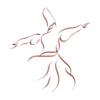Learning Copperplate...
-
Forum Statistics
353.6k
Total Topics4.6m
Total Posts -
Member Statistics
126,343
Total Members2,585
Most OnlineNewest Member
lyesbkz
Joined -
Images
-
Albums
-
USG 3
- By USG,
- 0
- 0
- 64
-
Marks propelling pencils (Mechanical Pencils)
- By Mark from Yorkshire,
- 2
- 0
- 5
-
Pens & Inks
- By Astronymus,
- 0
- 0
- 4
-
Dan Carmell
- By Dan Carmell,
- 0
- 0
- 28
-
Sept-Nov 2024
- By yazeh,
- 0
- 0
- 7
-













.thumb.jpg.f07fa8de82f3c2bce9737ae64fbca314.jpg)



.thumb.jpg.331e554113c33fb39d5bf3233878978a.jpg)
desaturated.thumb.gif.5cb70ef1e977aa313d11eea3616aba7d.gif)





Recommended Posts
Create an account or sign in to comment
You need to be a member in order to leave a comment
Create an account
Sign up for a new account in our community. It's easy!
Register a new accountSign in
Already have an account? Sign in here.
Sign In Now